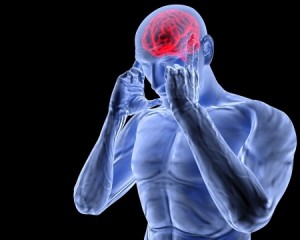Headaches and Different Management Options
To download a copy of this newsletter, please click here.
Houston Chiropractor Comments: Headaches are one of the more common conditions that enter the offices of primary care physicians, including chiropractors. The standard medical treatment revolves around the use of medications and/or injections. The standard chiropractic treatment approach includes manual therapies that may include spinal manipulation or adjustments, manual or mechanical cervical traction, mobilization techniques, trigger point therapy, physical agents or modalities such as electrical stimulation, ultrasound, etc., and nutritional counseling. While both approaches have their pros and cons, there are far less side effects associated with the chiropractic treatment option.
Headaches can generally be classified as primary or secondary. Primary Headaches include Migraine, Tension, and Cluster. Secondary headaches occur because another condition or injury is present such as after a car accident or slip and fall injury, due an infection, a sinus, jaw, and/or dental condition, a vascular injury such as stroke, a medication side effect, psychiatric disorder and others.
Treatment for patients with headaches is dependent on the cause. Choosing a type of health care service for the treatment of headache can be a difficult choice. When considering the use of complementary and alternative medical approaches available to patients with chronic tension-type headaches, a recent report revealed that 40% of 110 patients surveyed utilized some form of an alternative/complementary medical approach. The most frequently utilized was chiropractic (21.9%), followed by acupuncture (17.8%), and massage therapy (17.8%).
If you find yourself frequently utilizing over-the-counter medications such as an anti-inflammatory drugs (ibuprofen: Advil, Nuprin; Naprosyn such as Aleve) or Tylenol, it is probable that the chiropractic management approach will benefit your headache condition.
Frequently, in patients with headaches, the vertebrae in the upper neck lose their normal range of motion and the muscles in that region that attach to the base of the skull become overly tight and squeeze or compress the nerves that feed into the head. This results in radiating pain over the top or around the head, sometimes into the eyes. Chiropractic care can make it easier for you to move your head and neck forwards, back, rotate or twist, and side bend. This, in turn reduces the muscle tension and nerve pinching, which reduces headache pain.
Dr. Ward Beecher practices at Beecher Chiropractic Clinic at 1001 Pineloch, Ste 700 Houston, TX 77062. You can schedule an appointment at BeecherChiropractic.com or by calling (281) 286-1300. If you have any questions regarding this blog, please comment below!
Different Types of Headaches and Chiropractic Care
To download a copy of this week’s newsletter, please click here.
Clear Lake City Chiropractor Comments: Adults may experience many different kinds of headaches. A primary headache is a headache that is not a part of another disease process. Secondary headaches can come from a poor eyeglass prescription, diabetes, the flu, or even a brain tumor. The most common primary headaches are tension-type, migraine, and cervicogenic (from the neck).
Tension type headaches feel like a tight band around your head. Stress seems to aggravate them and women tend to get this type of headache more frequently. Females are also more affected by

migraine headaches.
There are two types of migraine: classical and common. The classical migraine headache may start with nausea or sickness in the stomach and proceed to an intense throbbing pain on one side of the head. The common migraine lacks this nausea and is more common than the classical type.
In cervicogenic headache, neck function is prominently disturbed. In addition to neck pain, there are usually tight neck and shoulder muscles, and a limited range of motion.
Recent research has shown that the three above described headaches can also overlap with one another. In chiropractic, we look to the spine as an often-overlooked factor in headache treatment. By objectively analyzing spine function, the doctor will identify the joints that are restricted in their range of motion or show abnormal posture and alignment. Many patients on x-ray, or through external postural analysis from the side, can show forward head posture. This is where the neck seems to arise from the front of the chest rather than back over your shoulders. The head is very heavy and with this poor posture, the muscles at the back of the neck must contract to restrain this heavy load.
There isn’t one particular bone that is treated for these different types of headaches, the premise being that the headache is a symptom of another problem in the spine.
Chiropractic care has an excellent safety profile and several studies have shown that patents with headaches positively respond to chiropractic care without the side effects often seen with drug treatments. Chiropractic care is one of the most researched non-drug options available for patients. Unfortunately, many patients choose over-the-counter and prescription medications and don’t consider more natural approaches that may get at the cause of the condition rather than just its effects.
Dr. Ward Beecher practices his Houston Chiropractic Clinic at 1001 Pineloch, Ste 700 Houston, TX 77062. You can schedule an appointment by calling (281) 286-1300.

